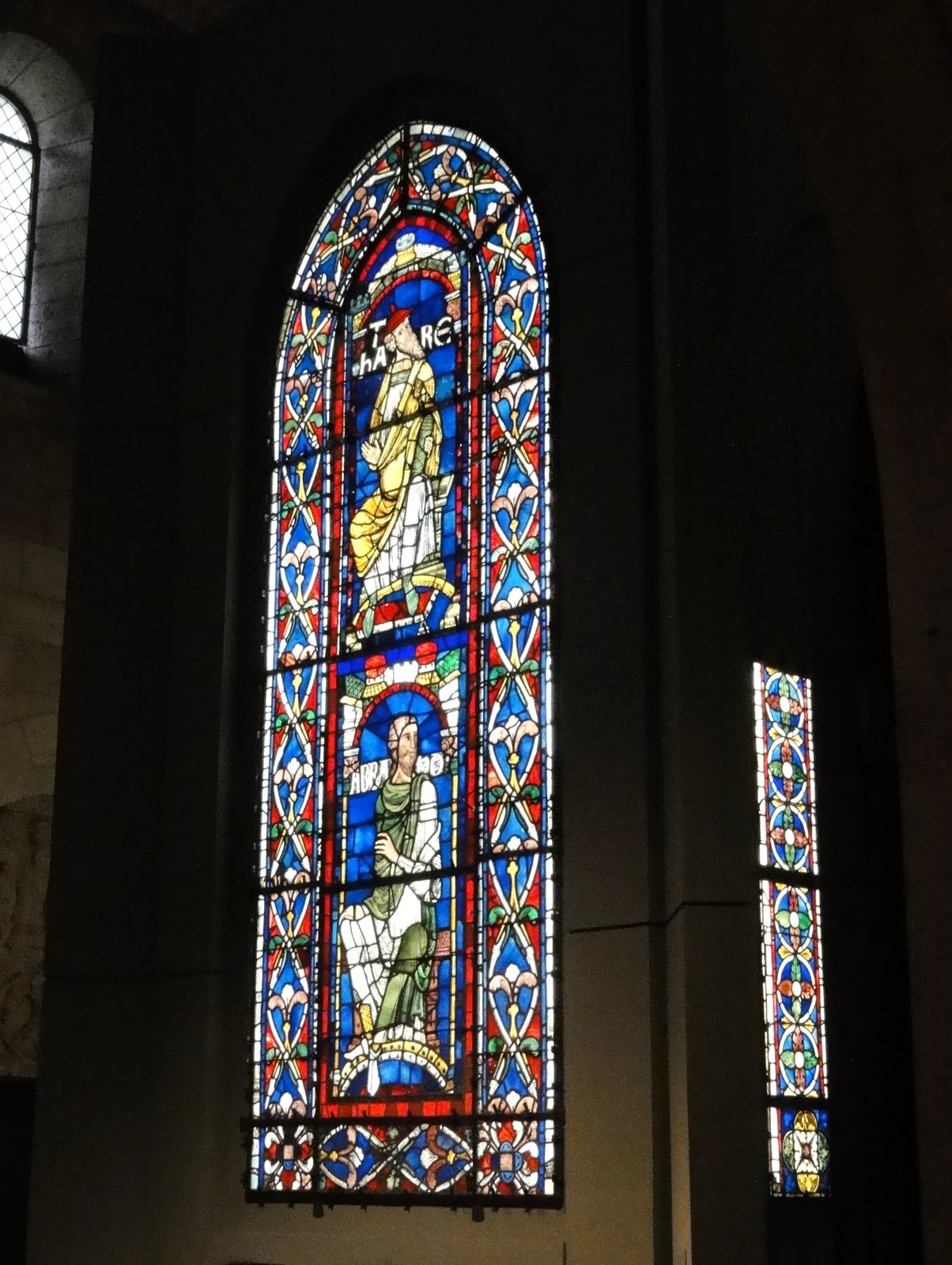This is the first time that windows from Canterbury's 'Ancestors of Christ' cycle have been out of the cathedral close since they were created between 1178 and 1180. The 86 windows in the cycle representing Old Testament figures in the lineage from Adam to Christ were originally installed in the clerestory of the cathedral's Norman (or Romanseque) choir, about 60 feet above the floor of the cathedral. Each ancestor has his name on a white band running behind his head so that they could be identified from below.
 |
| Canterbury Cathedral's Norman choir. The clerestory windows are at the very top. Photo by Blomme/McClure |
 |
| The great south window of the southwest transcept of Canterbury Cathedral. Photo by Blomme/McClure |
 |
| 'Abraham' and 'Thera' with original border panels as displayed at The Cloisters. Photo by McClure |
 |
| 'Thera' , the father of Abraham, from 'The Ancestors of Christ' window cycle of Canterbury Cathedral, photo by McClure |
 |
| 'Abraham' from 'The Ancestors of Christ' window cycle of Canterbury Cathedral, photo by McClure |
 |
| 'Lamech' with original Romanseque foliate border from 'The Ancestors of Christ' window cycle of Canterbury Cathedral, photo by McClure |
In the exhibition there was a section of the border from the clerestory windows of the choir that had not been restored. Looking at it you realized the importance of cleaning and restoration to these windows. Almost no light penetrated the layers and layers of dirt and grime and atmospheric damage.
 |
| 'Jared' and 'Phalec' from 'The Ancestors of Christ' window cycle of Canterbury Cathedral, photo by McClure |
Phalec was either the fourth or fifth generation after Noah. He gazes directly out of the picture and holds a scroll which indicates authority.
 |
| 'Noah' with original border from 'The Ancestors of Christ' window cycle of Canterbury Cathedral, photo by McClure |
My favorite window in the series was 'Noah'. He is looking up and raising his right hand as if he's having a discussion with God about the logistics of building an Ark. With his right leg raised and his left hand on his hip, he is more animated and three dimensional than the other five figures in the exhibition.
These newly cleaned windows are indeed radiant. The bright colors, interesting patterns and arresting shapes catch the modern viewer by surprise. The artists who created them understood how to convey the unique qualities of these Old Testament figures to a largely illiterate population.
No comments:
Post a Comment